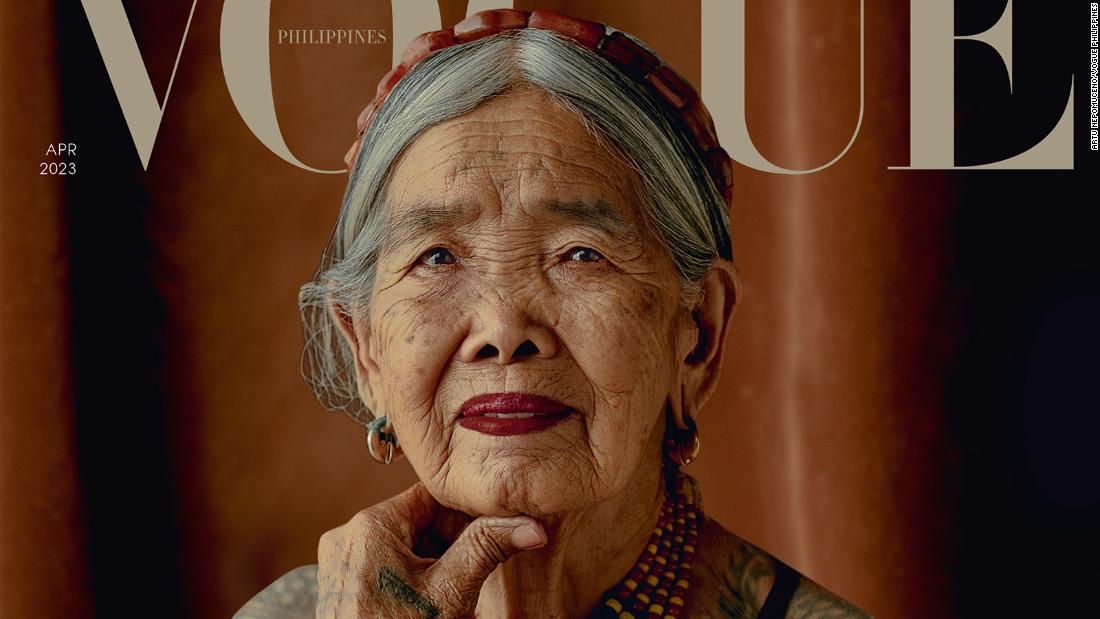
Whang-Od — also known as Maria Oggay — has been perfecting the art of hand-tapping tattoos since she was a teen, learning under her father’s instruction.
Residing in the mountain village of Buscalan, about 15 hours north of Manila, in Kalinga province, she is considered the country’s oldest mambabatok — or traditional Kalinga tattooist.
Once, the hand-tapped tattoos that Whang-Od creates using just a bamboo stick, a thorn from a pomelo tree, water and coal, were earned by indigenous Butbut warriors.
Now, international visitors seeking her signature geometric designs make up much of her clientele.

Apo Whang-Od is considered the country’s oldest mambabatok. Credit: Artu Nepomuceno/Vogue Philippines
The art can only be passed down to blood relatives, and Whang Od has been training her grandnieces Elyang Wigan and Grace Palicas for several years.
“I’m the only one left alive that’s still giving tattoos. But I’m not afraid that the tradition will end because (I’m training) the next tattoo masters.”
“The tradition will continue as long as people keep coming to get tattoos,” she added.
“As long as I can see well, I will keep giving tattoos. I’ll stop once my vision gets blurry.”
Vogue Philippines editor-in-chief Bea Valdes said staff at the publication decided unanimously that Whang-Od should go on the cover. “We felt she represented our ideals of what is beautiful about our Filipino culture.
“We believe that the concept of beauty needs to evolve, and include diverse and inclusive faces and forms. What we hope to speak about is the beauty of humanity,” Valdes added.